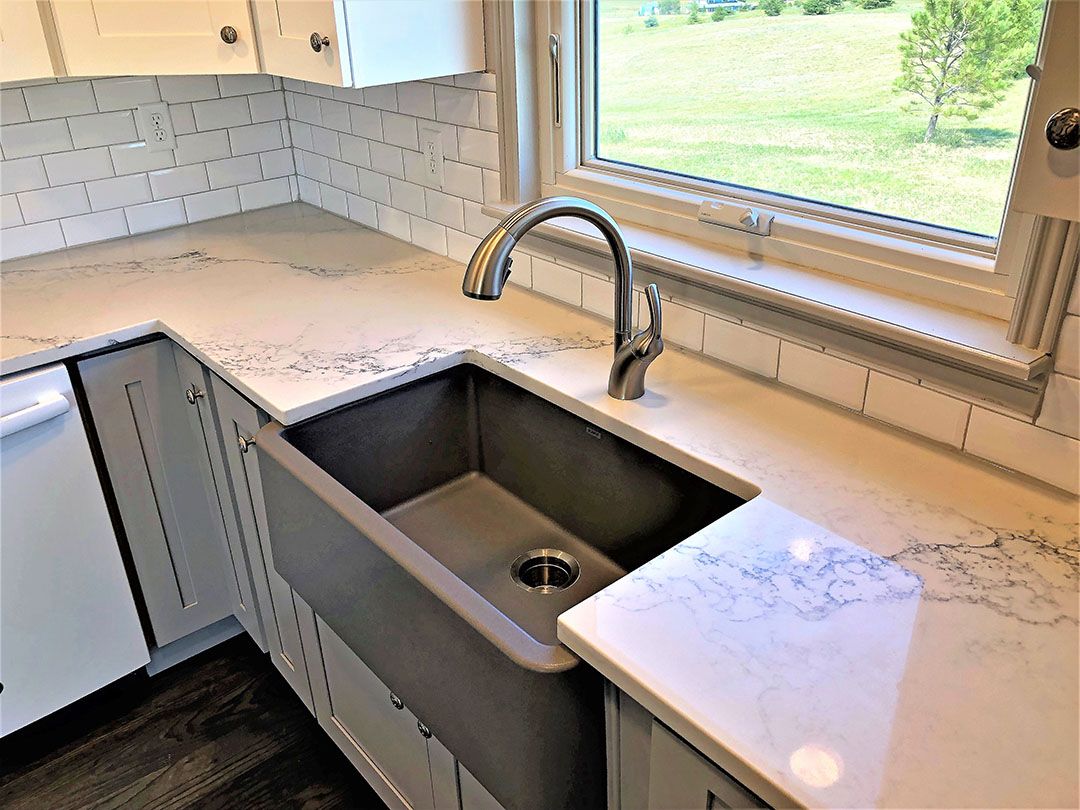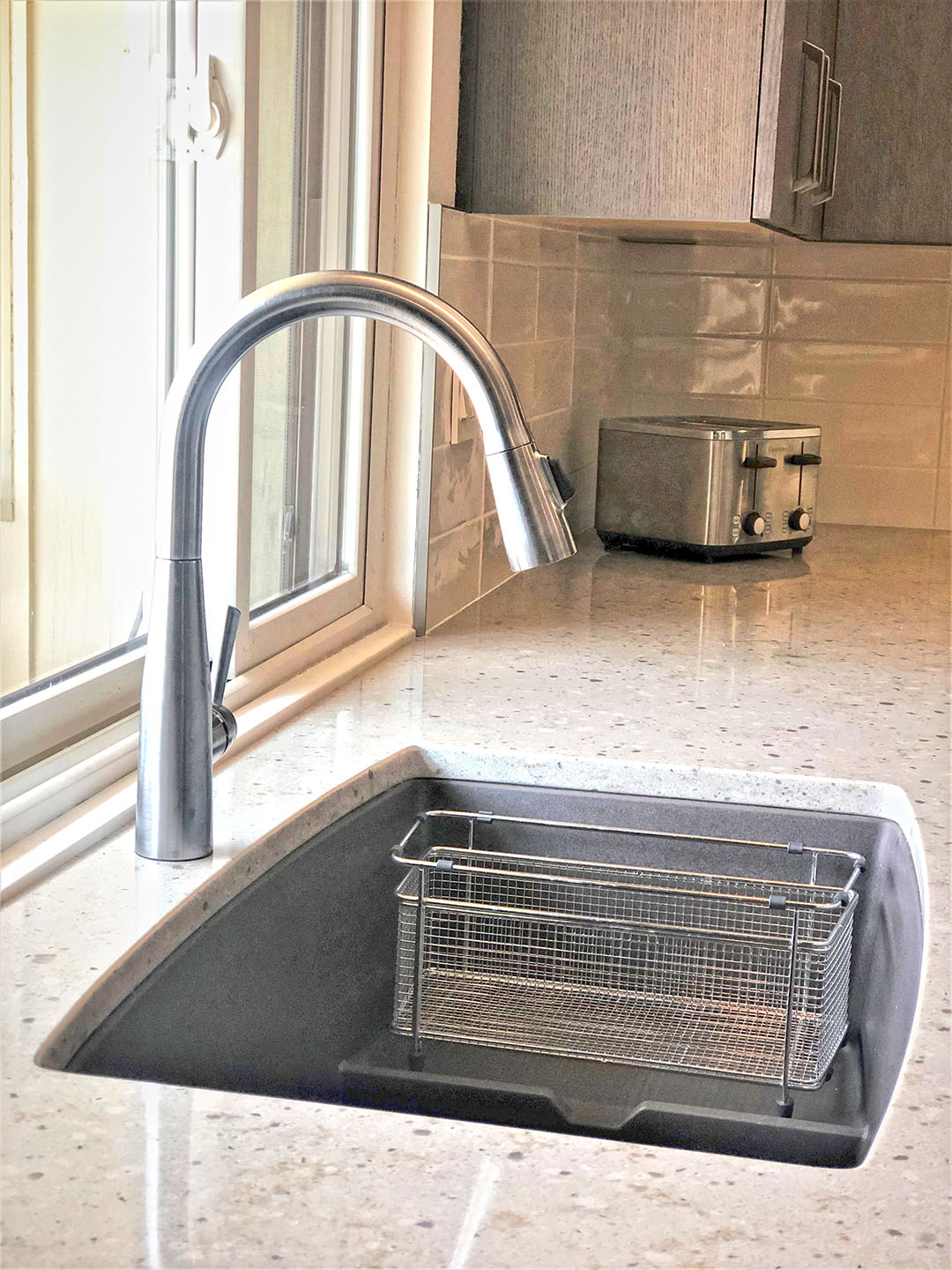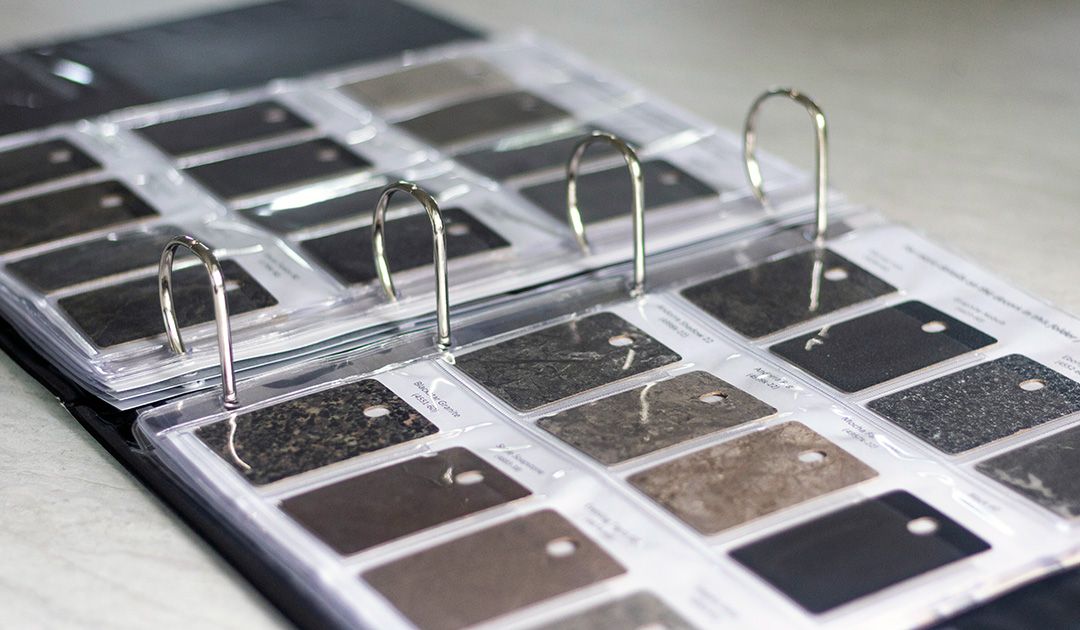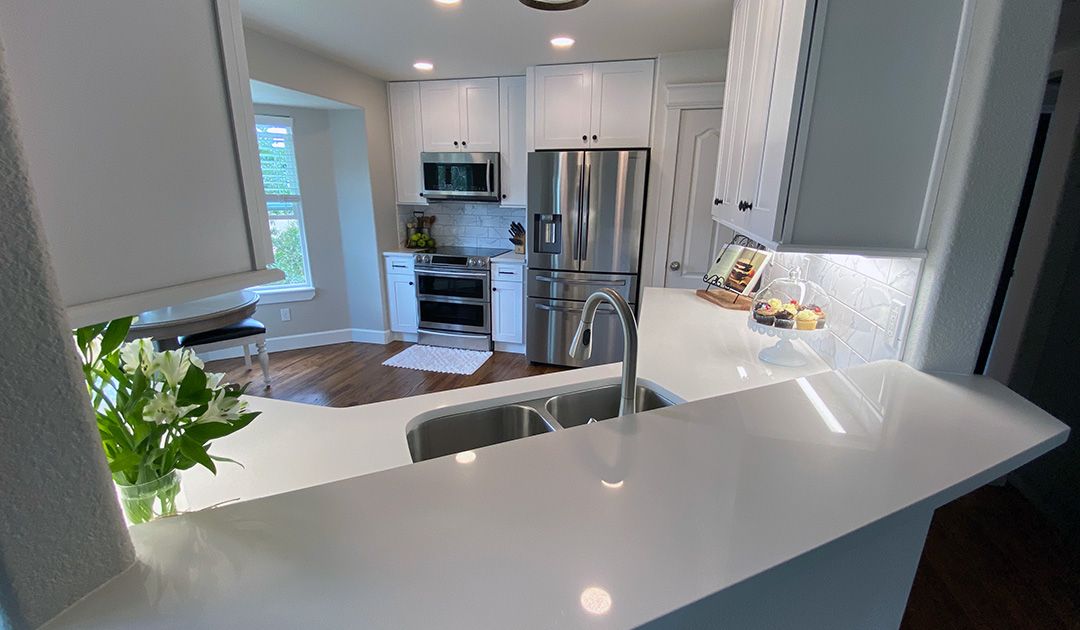
Selecting the Ideal Kitchen Sink: Trends, Materials, and Styles

One of the most hard-working features in a kitchen, your sink should be both functional and reflective of your kitchen’s style.
Choosing the proper kitchen sink can actually become a complicated process. Contemporary sinks come in a variety of shapes, sizes, materials, not to mention an endless selection of accessories such as cutting boards, utensil trays, drying racks, and colanders. In this article, we’ll discuss some of the new features and trends changing the way people use and think about their kitchen sink.
Single or Double Basin?
Most homeowners and custom kitchen renovators are opting for large, single-basin sinks rather than traditional double sinks. The larger, single-basin sink allows for more work area. You wouldn’t think it would make that much of a difference, but this added space proves to be incredibly useful when working with bulky pots, pans, and roasters. Additionally, a smaller prep sink is found in the kitchen, usually conveniently located in an island countertop or near the range. Instead of choosing a traditional double-basin sink that is full of compromises, homeowners are realizing the usefulness of duty purpose sinks – a large single sink for the majority of the water work, and a specialty smaller prep sink when in the act of cooking.

Material
About 70% of all kitchen sinks are made of stainless steel, and for good reason. Stainless sinks are often affordable, come in a variety of shapes and sizes, and offer longevity. Gauge, or thickness of metal used, is often one of the most important considerations. The thicker the stainless steel, generally the less noisy and prone to denting the sink is. Stainless sinks tend to scratch over time and easily show water spots, making it more difficult to maintain than other materials.
The material of your sink can be dependent, or accentuate, the material you choose for your countertops. Sometimes you can mix and match materials, but sometimes they are built together. Granite composite sinks are becoming incredibly popular as they are quiet, come in virtually any shape and color, and are highly durable (possibly the most durable sink material available). Granite composite sinks are a perfect compliment to granite countertops, one of the most sought-after countertop materials that we install. However, don’t forget that copper, cast iron, fireclay, enamel, and acrylic are also available sink choices depending on your needs.

Self-Rimmed Sinks
A self-rimmed or flush mount sink is common in many production homes or for the DIY’er. The sink simply drops into a hole cut out of the countertop, with the rimmed edge of the sink sitting on top of the countertop. The advantage of this is that these sinks are incredibly easy to install and can be installed onto virtually any countertop material. There’s no special installation or skills required. The disadvantage is that these sinks generally aren’t very attractive – they look and function on the lower end of the spectrum. The caulked edges where the rim meets the countertop require regular cleaning and maintenance. This can be unsightly, and if forgotten, the cause of leaks and drips down into your cabinetry.
Undermount Sinks
One of the more common methodologies used among our homeowners, undermount sinks are generally more visually pleasing. Undermount sinks provide no visible edges leading to smooth and finished looked, and makes cleanup easier. Undermount sinks are more difficult to install as the countertop must be cut precisely to fit the size and shape of the sink. Only countertop materials impervious to water can be used, and the joint requires regular cleaning (though caulking / sealing isn’t as much of an issue as it is with self-rimmed sinks).

Integral Sinks
Integral sinks means that the countertop and sink are manufactured together at the same time and come together as one piece. These sinks can be quite stylish as there are no visible seams or joints, leading to a clean, modern look. However, engineered solid surface countertops made of acrylic or quartz composites are less durable and prestigious granite or natural stone. While they can be repaired, matching colors exactly is almost impossible and if one element becomes significantly damaged, the entire section must be removed. In short, if you crack your sink, your entire countertop must also be removed and replaced.
Conclusion
There’s really no “right” choice or one-size-fits-all selection when it comes to sinks. Kitchen sinks are wholly dependent on who’s using them, what work they intend on doing, and how they want it to look. Once the size of the kitchen is determined, and a countertop material is selected, it’s much easier to narrow down sink choices. If you’re beginning to contemplate sinks and are going down the road of a kitchen remodel, reach out for a free quote. We’d love to show you new trends and share best practices.


